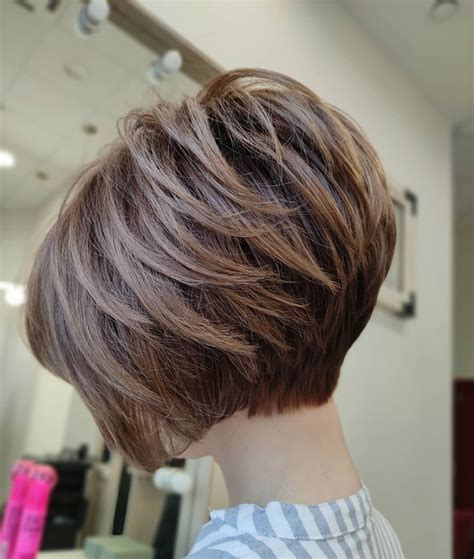Introduction
The short women’s bob, a timeless classic, has captivated hearts for decades. Its versatility, ease of styling, and flattering silhouette make it a popular choice for women of all ages and face shapes. With countless variations and styling options, the short bob offers endless possibilities for self-expression and personal style.

Pain Points: The Frustrations of Long Hair
Before embracing the short bob, many women struggle with the frustrations associated with long hair. The constant tangles, split ends, and time-consuming styling routines can become a burden. Moreover, long hair may not always complement the desired aesthetic or lifestyle.
Motivations: Embracing the Short Bob
Women are drawn to the short bob for various reasons. Some crave a change from the monotony of long hair, while others seek a more youthful or sophisticated appearance. The convenience and low maintenance of the short bob also appeal to those with busy schedules.
Effective Strategies: Choosing the Perfect Short Bob
Selecting the ideal short bob depends on several factors, including face shape, hair texture, and personal preferences.
Face Shape
- Oval Face: Almost any bob variation looks flattering on oval faces.
- Round Face: Short bobs with volume at the crown balance out round faces.
- Square Face: Angular bobs with side-swept bangs soften square jawlines.
- Heart Face: Layered bobs with longer front pieces complement heart-shaped faces.
Hair Texture
- Fine Hair: Short bobs with layers add volume and texture.
- Thick Hair: Blunt bobs with minimal layers suit thick hair to reduce bulk.
- Curly Hair: Bobs with defined curls create a bouncy and voluminous look.
Personal Preferences
- Classic Bob: A chin-length bob with a clean, straight line at the bottom.
- A-Line Bob: A bob that is slightly shorter in the back than in the front, creating an “A” shape.
- Graduated Bob: A bob with shorter layers at the back and longer layers at the front.
- Asymmetrical Bob: A bob with one side longer or shorter than the other.
Step-by-Step Approach: Styling Your Short Bob
Styling a short bob requires minimal effort and can be customized to suit any occasion.
1. Wash and Condition: Use a volumizing shampoo and conditioner to enhance body and texture.
2. Blow Dry: Blow dry your hair using a round brush to create volume at the roots.
3. Add Texture: Apply a texture spray or mousse to give your hair definition and movement.
4. Customize Your Look: Experiment with different partings, hair accessories, and styling products to create a unique and personalized style.
Tips
- Keep it Trimmed: Regular trims prevent split ends and maintain the shape of your bob.
- Embrace Bangs: Bangs can complement a short bob and frame your face.
- Accessorize: Headbands, clips, and ribbons add a touch of personality to your short bob.
- Protect Your Hair: Use heat protectants when styling and avoid over-washing to prevent damage.
Tables
Table 1: Bob Variations by Face Shape
| Face Shape | Ideal Bob Variations |
|---|---|
| Oval | Classic Bob, A-Line Bob, Graduated Bob |
| Round | A-Line Bob, Graduated Bob, Asymmetrical Bob |
| Square | Angular Bob, Side-Swept Bangs Bob, Asymmetrical Bob |
| Heart | Layered Bob, Long Front Pieces Bob, Asymmetrical Bob |
Table 2: Bob Variations by Hair Texture
| Hair Texture | Ideal Bob Variations |
|---|---|
| Fine Hair | Layered Bob, Voluminous Bob, Graduated Bob |
| Thick Hair | Blunt Bob, Minimal Layers Bob, Angular Bob |
| Curly Hair | Defined Curls Bob, Bouncy Bob, Layered Bob |
Table 3: Bob Styling Options
| Occasion | Styling Option |
|---|---|
| Casual | Blow Dry with Texture Spray, Parting |
| Formal | Sleek Blowout with Headband, Side-Swept Bangs |
| Edgy | Spiky Ends, Asymmetrical Parting, Hair Accessories |
| Vintage | Pin Curls, Decorative Clips, Retro Waves |
Table 4: Bob Maintenance Tips
| Maintenance Tip | Frequency |
|---|---|
| Trim Split Ends | Every 6-8 weeks |
| Wash and Condition | As needed |
| Use Heat Protectants | When styling |
| Avoid Over-Washing | To prevent damage |
